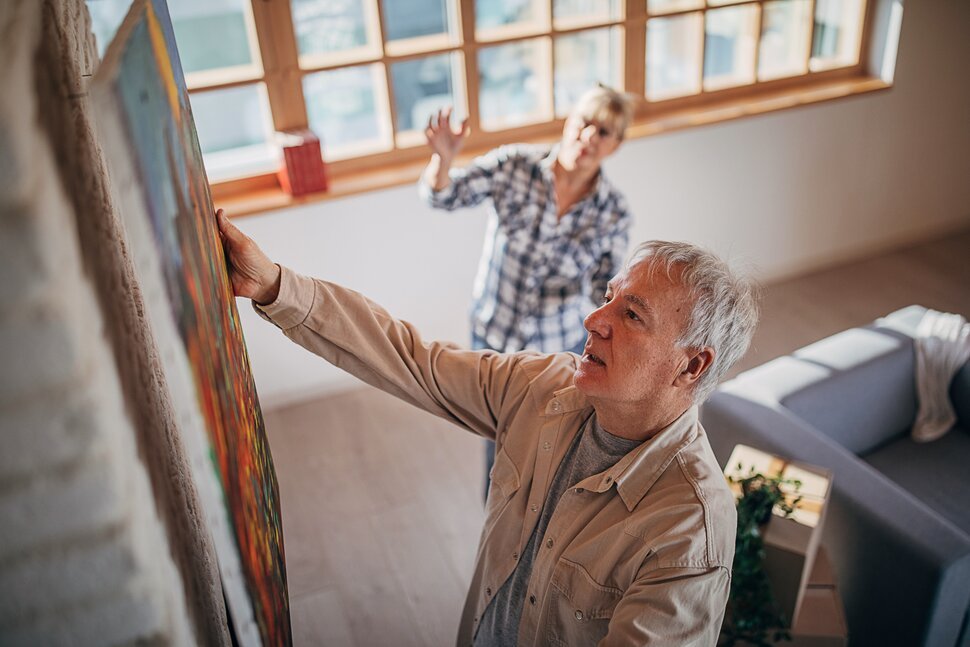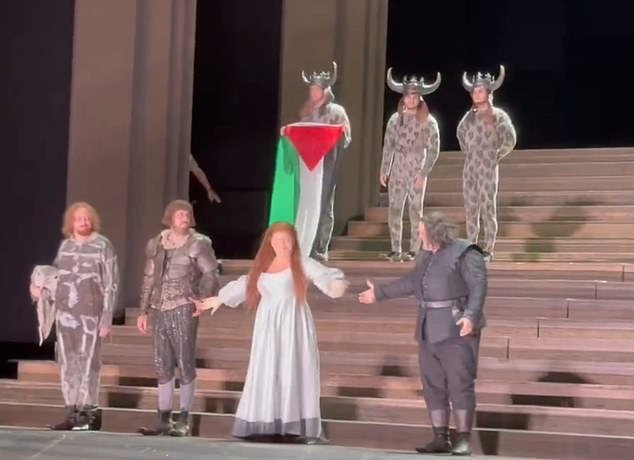Whether you’re a fan of Banksy’s street art style or prefer the vivid colors of impressionists like Monet, there’s no doubt that art can be a great investment, and it’s growing in popularity. According to the 2022 Global Art Market Report from Art Basel and USB, the global art market reached $65.1 billion in aggregate sales in 2021, up 29% from 2020.
As a tangible asset, art can be a good hedge against inflation. Art value isn’t tied to the stock market’s performance, so artwork can provide diversification and stability during times of volatility.
While buying art for your kitchen or living area can be a great way to add color and personality to a room, there’s more to investing in artwork than just purchasing individual pieces.
More dealers and art houses are engaging in dual online and in-person sales, Art Basel reports, as a “seismic shift” in the art world to digital objects has also occurred. New platforms and the demand for non-fungible tokens, or NFTs, make investing in art more accessible, so you can invest even if you aren’t one of the uber-rich.
If you’re wondering how to invest in art, here’s what you need to know about investing in this alternative asset class:
- Role of art investments in a portfolio.
- Downside of investing in art.
- Ways to invest in art.
Role of Art Investments in a Portfolio
Art plays several roles within an investor’s portfolio. Diversification is key when it comes to investing, and adding art can help you achieve that goal. Art is a unique asset class with a low correlation to stocks, bonds and other traditional investments. When stock prices dip, art tends to hold its value.
For investors looking to preserve their wealth during a volatile economy, art can also act as a hedge against inflation. Because it’s a tangible asset, art can perform well during periods of high inflation, and it’s not as susceptible to market fluctuations.
While the rise of digital art and NFTs is a relatively new development, the physical art market is more established. Unlike equities, which are more sensitive to market changes, the demand for art has grown steadily, and physical fine art pieces tend to maintain or increase their value over time.
Downside of Investing in Art
However, there are some drawbacks to investing in art. One of the main negatives is the lack of liquidity. If you need to access cash or liquidate your investment of physical artwork, you’ll need to sell it through an art gallery, auction house or private art collector. It can be a time-consuming process to sell a valuable piece of art, so art tends to work best as a long-term investment.
Counterfeit pieces are also a common challenge art investors face, especially those that are new to the art market. It can be difficult to tell a fake from an original, so working with a reputable gallery or art dealer is essential.
Finally, because many art investments deal with physical works of art, you also have to worry about properly storing and protecting your investment. And there may be additional costs involved to store and insure your artwork.
Ways to Invest in Art
Investing in art can be a useful alternative to traditional stocks and bonds, though it has a reputation for being out of reach for all except high-net-worth individuals. But the art game is changing. Modern investing platforms and digital art allow people at every income level to become art investors.
There are five key ways to invest in art:
Individual works. If you want to invest in artwork you can hang in your own home, you can purchase art by working with a dealer, using an auction house or attending art fairs.
Art is a massive market with a range of styles and tastes. It’s important to research and understand the leading artists, their markets and their growth potential. And don’t underestimate the importance of finding something that speaks to you, because it may have that appeal to other buyers, too.
In general, you want to look for artwork that has been traded multiple times to see what the piece’s growth rate is. Even if you intend to hold on to the artwork for years, researching past performance and similar pieces from the artist can help you gauge the expected return on investment.
Art funds. While you won’t find art index funds or exchange-traded funds on the traditional investment platforms, companies that offer art-specific funds are becoming increasingly popular. With platforms like YieldStreet, you can invest in blue-chip art. Similar to blue-chip stocks, blue-chip art is a term that refers to master artists’ works with values that have steadily increased as well as art from mid-career artists. YieldStreet acts as a robo-advisor, and it manages and insures your investment. According to YieldStreet, its fund has a net annualized return of 12.2%.
Fractional shares. Artwork from leading artists can cost thousands of dollars, if not millions. If you don’t have that kind of money to invest in art, there’s another way to get access to this alternative asset class: fractional shares.
Platforms like Maecenas and Masterworks allow you to purchase fractional shares, or slices of valuable works of art. Investors can open an account with as little as $1,000. Fractional shares allow you to buy a portion of many different pieces of art, diversifying your portfolio.
Digital art. The digital art market is exploding in popularity, particularly with NFTs. In 2019, NFT sales on blockchain platforms such as Ethereum, Flow and Ronin totaled just $4.6 million. In 2021, sales reached a staggering $11.1 billion, Art Basel reports.
NFTs are nonphysical, digital forms of traceable and verifiable works of art. What sets NFTs apart from other digital forms of art is that they have “digital integrity,” or one-of-a-kind identification coding and metadata, so they cannot be replaced.
NFTs are supported by a blockchain network, providing transparency, authenticity and liquidity. That also makes it easy for NFT investors to buy and sell artwork to other investors.
There are NFTs from masters such as Leonardo da Vinci and Vincent van Gogh. But NFTs are also an excellent way to purchase artwork from emerging artists. For example, Mike Winkelmann, a digital artist that goes by Beeple, sold a digital collage called “Everydays: The First 5000 Days” at Christie’s auction house in March 2021 for a record $69.3 million.
- Visit an NFT marketplace. Through NFT marketplaces, you can purchase art NFTs from artists or other investors. OpenSea is one of the largest and best-known NFT marketplaces. According to the company, it has handled over $20 billion in market volume.
- Fund your digital wallet. NFT platforms require you to create a digital wallet and add currency before you can begin buying and selling tokens. Typically, you can’t use fiat currencies like U.S. dollars; NFT platforms require cryptocurrencies such as Ether (ETH), Solana (SOL), USD Coin (USDC) or Dai (DAI).
- Select your favorite art piece and make a bid. Once your account is created and you have funded your digital wallet, you can browse the marketplace’s platform and purchase the product you want.
Related stocks. As the popularity of NFTs and other forms of digital art increases, another way to invest in art is to invest in supporting stocks. Artists of quality NFTs use design software to create their artworks, such as Adobe Illustrator or Photoshop. By investing in stocks such as Adobe Inc. (ticker: ADBE), you can benefit from the popularity of NFTs without needing to use cryptocurrency or blockchain technology.
Takeaway
After you’ve researched how to invest in art, you can move forward with investing your money. When evaluating whether to buy a piece of artwork, whether physical or digital, consider the level of demand from art collectors for the artist’s work. Evaluating whether pieces from artists are in demand is the key to maximizing the odds that the pieces will appreciate in value.






